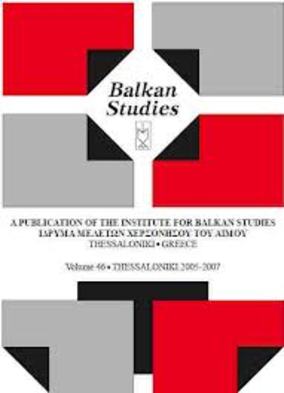The iconostasion of the Greek Orthodox Church in Karcag
Part of : Balkan studies : biannual publication of the Institute for Balkan Studies ; Vol.28, No.2, 1987, pages 237-258
Issue:
Pages:
237-258
Section Title:
Articles
Author:
Abstract:
According to the evidence of archival documents, Greek merchantsarrived in Jâszkunsâg (a district of Central Hungary) in the 16th centuryfollowing the Turkish conquerors. Their imigration went on even in the 17thand 18th centuries. They had a multisided commercial activity: they wereshopkeepers, money-lenders, rented taverns, meat houses, lodging houses.According to 18th century censuses, their number was low, about 70 persons.They were welcome by local residents, as their trading activity was importantfor the people of Jâszkunsâg dealing primarily with agriculture and animalhusbandry.The Greeks, getting into a strange country tried to accomodate to theconditions in their new homeland, their attachment to their motherland,however, was very strong. Their loyalty manifested itself in cultivating theirvernacular, and even more in their unconditional sticking to the ancientEastern Orthodox Church. The Greek Diaspora in the Jâszkunsâg had themaster builder, Kâroly Râbl build their church, who carried out the plansof József Jung. The inner decoration of the church and the erection of theiconostasion was finished in 1811, as it is testified by a Greek inscription on it.On the screen there are 58 icons arranged in 7 rows, which visualizestories from the Old and the New Testaments. The Deisis tier and the ChurchFeasts tier are missing from the iconostasion. Two masters, probably of Greekorigin, left the mark of their work on the icons. One of them had closer connectionswith Oriental traditions : he produced icon-like compositions makinguse of Baroque elements. The other master worked in the spirit of WesternBaroque, composing his picture in accordance with Western iconography.Both masters strongly stuck to a common idea: every composition was subordinatedto the pictorial formulation of the idea emerging from the wholeiconostasion. The sculptor planned both the panels and the whole screen tofit place-determined variations of one form, the apse arch. The master mayhave come from the workshop of Miklós Jankovics (νικολαος ιωαννουταλιδορος), wood-carver in Eger. The Iconostasion in Karcag, inlike otherBaroque screens, does not disintegrate into separate compositions, that iswhy it takes a distinguished place among Hungarian iconostasions.
Subject:
Subject (LC):
Keywords:
Εικονοστάσι, Ελληνική Ορθόδοξη Εκκλησία




